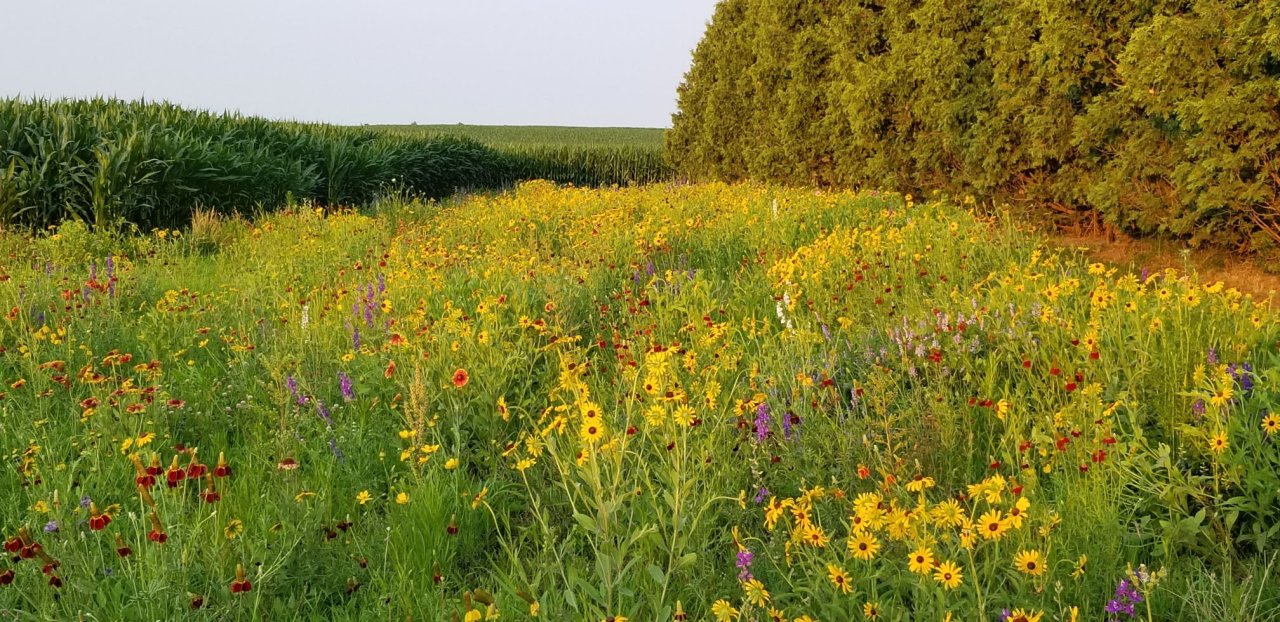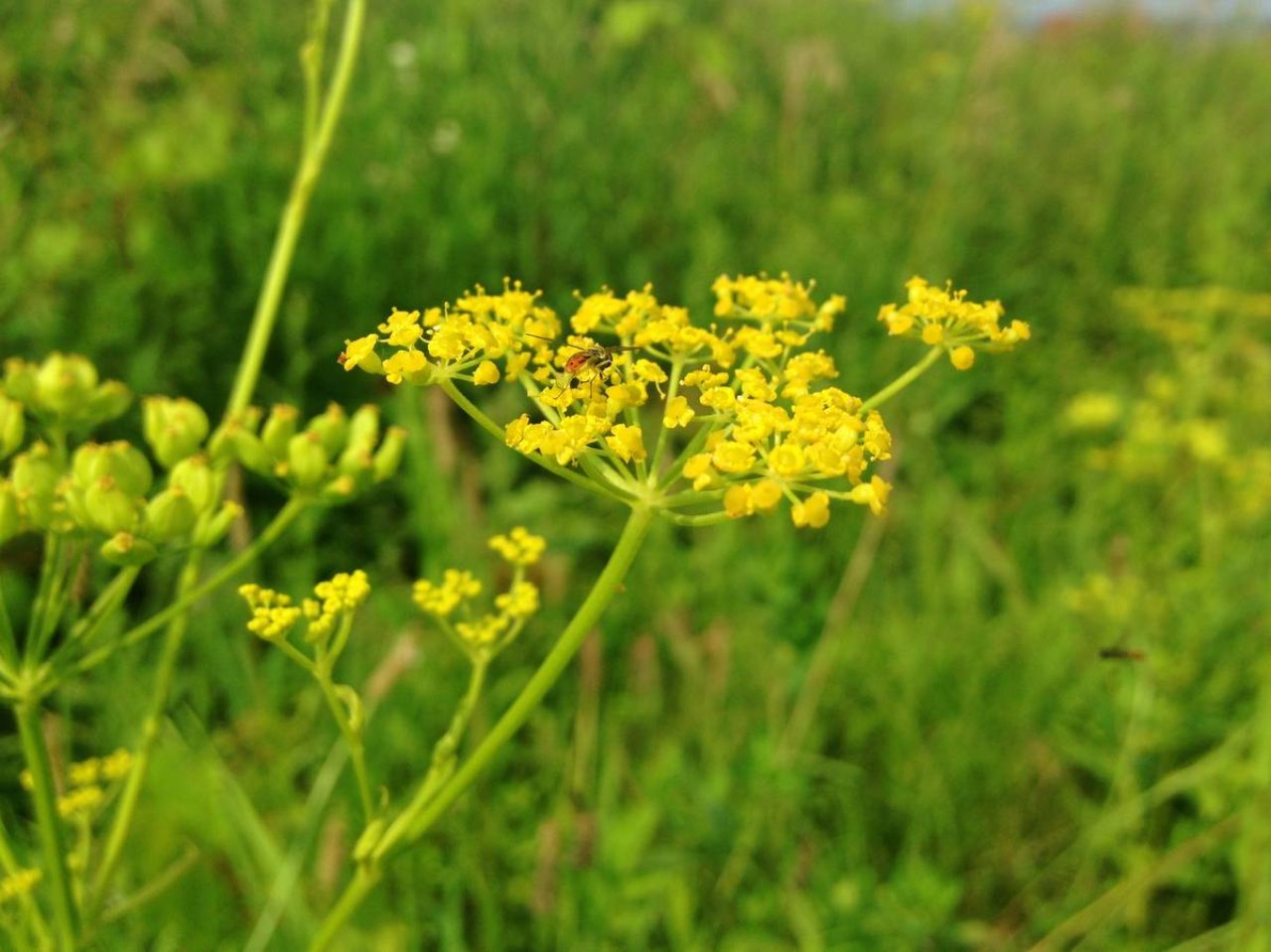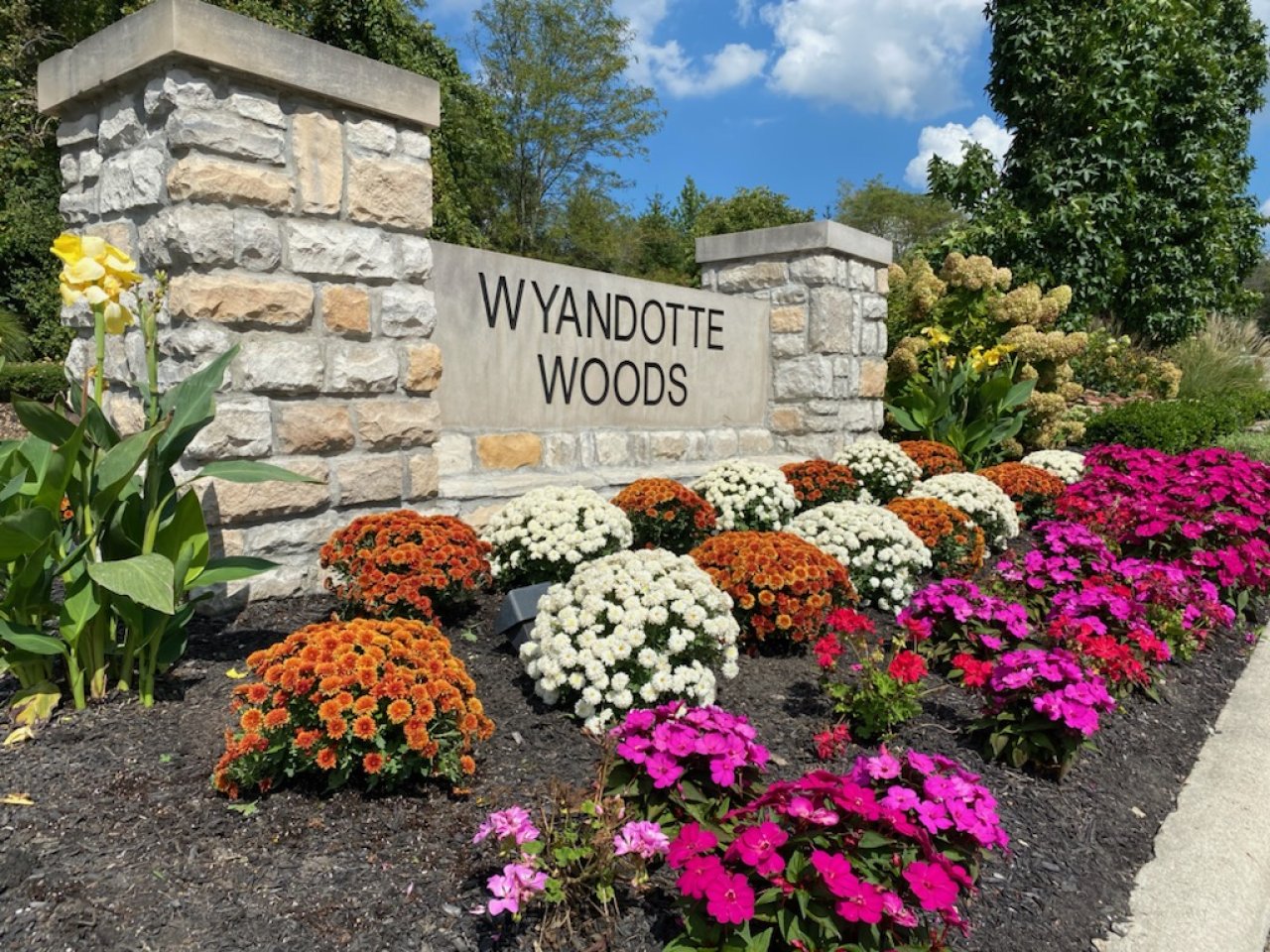
Beware of Poison Hemlock and Wild Parsnip Growing In Your Yard

Poison hemlock and wild parsnip, members of the carrot family, are two of the most dangerous weeds found in Ohio. These non-native weeds are commonly found growing together in roadsides, waste places, old fields, meadows, and along railroad tracks. The continuously wet conditions have allowed both to flourish this growing season. It’s important to be able to identify these plants and know what to expect if you accidentally come in contact with one.
Wild parsnip has intense yellow flowers with the stalks producing a more flat-topped appearance (pictured above). While the roots of wild parsnip are edible, it’s best to leave this plant alone as the leaves can cause a nasty reaction. This reaction is triggered by sunlight and can cause a potentially serious burn or rash on the affected area. In most cases, burns from wild parsnip exposure will resolve on their own with time, the burned skin cells die and flake off similar to your typical sunburn.
It is important to note that the cause and effect here gets muddled by time because symptoms do not appear for around 24 hours after initial exposure and severe blistering doesn’t peak for another 48 to 72 hours. If the burns are severe, you may try applying ice packs or OTC hydrocortisone cream on the affected area, taking ibuprofen or acetaminophen for additional pain relief. During the healing process it is important to keep the affected area from being exposed to sunlight to prevent further burning and discoloration. If direct exposure can’t be avoided, the use of sunscreen is essential to prevent dark spots from darkening further.
Poison hemlock produces white flowers that resemble the shape of an umbrella (pictured below). Do not mistake this dangerous plant for Queen Anne’s Lace, which is not poisonous at all and actually holds medicinal properties. The main different in these plants are their stems. Queen Anne’s Lace has a green hairy stalk whereas poison hemlock has a purple-ish hue on its stalk.
In contrast to wild parsnip, the toxins from this plant must be ingested or enter through the eyes or nasal passages to induce poisoning; they do not cause skin rashes or blistering. The roots of this plant are more toxic than the leaves and stems; however, all parts of the plant including the seeds should be considered dangerous. It is also important to remember that once the flowers mature, even plants that have been cut down will produce seeds.
Yet another difference from wild parsnip, you can begin to show symptoms as quickly as 30 minutes after ingesting the plant. There is not a known home remedy for poison hemlock exposure, and you should seek medical care immediately if you experience dilated pupils, unexplained muscle pain or weakness, loss of speech, varied heart rate, increased salivation, trembling, or in serious cases, respiratory failure.
To get rid of these plants it is best to use herbicides in the late fall or early spring, waiting until after the plant has sprouted flowers will be too late. Do not burn these plants as the fumes can trigger asthma symptoms and increase the risk of developing a reaction. Use caution if you decide to treat these plants, always wear gloves, protective goggles, a face shield, and protective clothing.
Information sourced from: OSU.edu (https://bygl.osu.edu/node/1321)
See more posts...


Are You Jumping On The Pollinator Trend?


